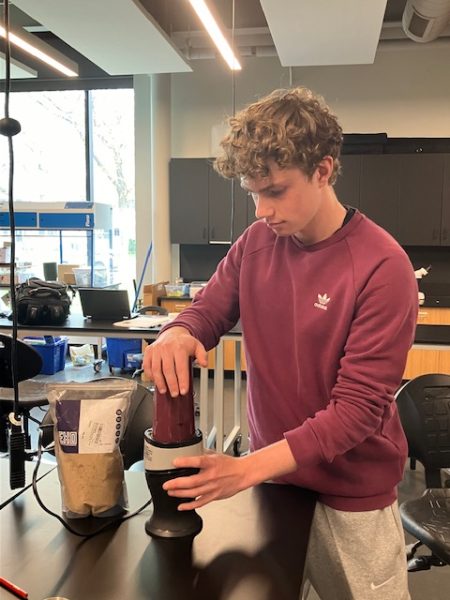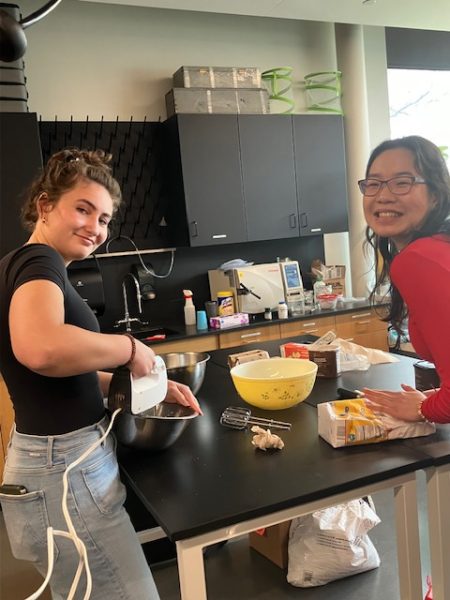After wrapping up individual projects students have worked on over the course of the year, the Advanced Science Research (ASR) and Advanced Technology Projects (ATP) classes collaborate on a small final project before the seniors leave in May.
Senior Rishi Bhargava explained, “For this final unit, you can team up with someone from the other class [for] a quick two-week project. You can choose pretty much anything … it’s pretty open to whatever you want to do.”
So far, the project is still in its early stages. First introduced the day after spring break, students have already decided on groups and are now brainstorming possible topic ideas.

Junior Talia Cairns explained, “It’s different from our own projects because the other ones were designed to end in competition … this is more just finding stuff that we’re interested in researching or making.”
Groups are made up of two to three people, and people from across classes can decide to work together. However, most students chose to work with peers in the same class for convenience.
Ideas relating to food, programming, engineering products and robotics have come up during discussions. “Any [topic is good] as long as it’s in a STEM field,” Cairns said.
Cairns is working on a food-related topic alongside her classmates, junior Deling Chen and senior Annika Lillegard. Currently, their idea covers working with various ingredients and a supplied toaster oven to experiment with different variables and reactions in baking, such as temperature.
Cairns is most excited about taste-testing their creations and seeing what others come up with: “It’s interesting to see what people are doing when we’re not worried about trying to make something that [has] to be impressive. [ I want to see] how people branch out to doing something they’re interested in.”
Instead of pursuing a new topic altogether, Bhargava decided to continue improving his year-round larger project of making planters that can monitor the health and growth of plants. “Previously, our application was more for industrial style use, but we’re trying to modify it to be suitable for people’s houses,” Bhargava said.

With a focus on improving usability and aesthetics, Bhargava will present the additions to the design at the end of the project. Bhargava continued, “’I’ve been in this class for two years and when I was starting out, the most helpful thing for me was posters and videos [from previous projects]. So I’m hoping to compile all the work I’ve done over these two years and just share it with everyone else that’s taking the class or that will take the class so they have something to go off that hopefully can help them out.”
A small project always caps off the ASR and ATP curriculum near the end of the year, although collaboration across classes is a new development. Most students view the project as a fun exploration that won’t be consumed by the stress and work of needing to present it in a competition. Additionally, unlike competition projects, students will also be spared from having to write formal scientific research papers, circumventing some of the more tedious requirements for competitions like the Intel Science and Engineering Fair (ISEF).
“We’ve been working so much on the independent projects, it’s nice to be able to have a break … it’s nice to be able to just experiment with something that we’re interested in without having to worry about competition or anything,” Cairns said.
When the project finishes in about a month, students will present a slideshow describing the different aspects of the topics and procedures to both classes.